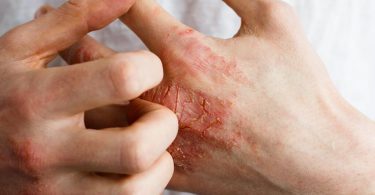Describing an effusion of fluid in the abdomen, ascites causes an increase in volume of the belly. It is the main complication of cirrhosis, but other causes exist. In this article we will talk about : ascites causes, symptoms and treatment.
Contents
Definition
This disease is an effusion of fluid in the abdomen, especially in the large peritoneal cavity. We call it also intra-abdominal fluid effusion.
Ascites is one of the main complications of cirrhosis; it is one of the signs of decompensation of this silent disease.
There are complications of this disease :
- infection of the ascites fluid by germs from the digestive tract;
- mechanical complications due to the push of ascites on the abdominal level: respiratory discomfort, appearance of umbilical or inguinal hernia…
Ascites causes
The main cause of this disease is cirrhosis.But, there are other causes:
- infections (tuberculosis);
- cancers (primary cancer of the peritoneum linked to asbestos for example, or extension of a cancer in the peritoneum);
- inflammatory diseases (lupus …);
- heart disease (right heart failure);
- decrease in blood proteins (protein deficiencies);
- kidney disease with leaking albumin in the urine (nephrotic syndrome).
Ascites symptoms
This disease is often painless, but it can cause:
- an increase in the size of the abdomen;
- rapid weight gain;
- discomfort, especially respiratory discomfort;
- edema of the lower limbs (not constant but frequently associated).
When ascites develops quickly and is very important, people complain of:
- pain;
- tension in the abdomen, whatever the cause of this disease ;
- respiratory discomfort.
Prevention councils
The prevention of ascites is linked to that of cirrhosis and liver disease.
To prevent cirrhosis from becoming complicated, it is indeed necessary to act on its causes: alcohol, hepatitis B, hepatitis C, metabolic syndrome, hemochromatosis (disease due to excessive absorption of dietary iron).
Exams
We detecte ascites during the interrogation and clinical examination.
The doctor palpates the patient’s belly to feel the presence of fluid, which predominates in the sides.
Ultrasound of the liver and abdomen is sometimes necessary.
Once the diagnosis has been established, the doctor performs a ascites puncture at the level of the left iliac fossa. A small amount of liquid (15-20 ml) is taken, then analyzed to know its composition and thus define its cause.
In a person with cirrhosis, the analysis makes it possible to verify that the ascites is not complicated by an infection because it is then a medical emergency.
Ascites treatment
The main treatment for ascites are:
- a diet low in salt because the triggering factor is the retention of water and salt;
- taking diuretics depending on the discomfort, the importance of ascites and if the patient does not have kidney problems;
- the puncture of large quantities of ascites (5 to 7 liters) when it is bulky.
- in the latter case, to compensate, it is necessary to infuse into the blood, in parallel, albumin which will maintain the blood volume.
In the event of a complication, essentially an infection of the ascites fluid, the treatment is based on:
- emergency antibiotics;
- albumin infusions to balance blood volume.
Read also:
Panic attack: causes, symptoms and treatment
Blepharitis: causes, symptoms and treatment
Asthma: causes, symptoms and treatment
Ascites: causes, symptoms and treatment
Asbestosis: causes, symptoms and treatment
Osteoarthritis: causes, symptoms and treatment






























